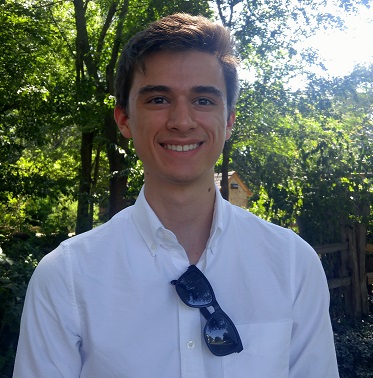
CAPS Kansas
Manipulating AcrAB-TolC efflux pumps using CRISPR/dCas9 to enhance E. coli antibiotic susceptibility.
Our Project
The CAPS Kansas iGEM team is combating antibiotic resistance through deactivation of the ArcAB-TolC efflux pump system present in various bacteria strains. This process is accomplished through the employment of the CRISPR-Cas9 system to edit the genomes of resistant bacteria and shut off the functionality of the pump.
What is antibiotic resistance?
Antibiotic resistance is a byproduct of evolution on the accelerated scale such as is present in organisms. The current prevalence of overuse of antibiotics in daily life has led to extremely high levels of exposure between the drug and bacteria. Because bacteria go through generations hundreds of times faster than macroorganisms such as mammals, they can take advantage of natural selection in this sense: the exposure to the antibiotic drug kills all the bacteria that are not resistant, and those that are specifically resistant overexpress their genes through exponential growth. These genes can also be expressed on plasmids that can be transported between bacterial cells, increasing exposure. Over time, this leads to lessening effects and usefulness of antibiotic drugs on a worldwide scale, as the bacteria population grows accustomed to combating it; and this will eventually lead to complete ineffectiveness of antibiotic drugs. Therein lies the problem.
What is CRISPR?
CRISPR is originally a bacterial “immune system” against bacteriophages that has been identified as a high-potential system in genetic engineering for its relative ease of use. CRISPR itself is used in bacteria to both store bacteriophage tracers in spacer DNA strands, and through the cas protein complex, to transcribe proteins and crRNA that specifically target the DNA of the bacteriophage. This complex locates invading bacteriophage DNA and cuts it at a point determined by the tracer, deactivating it. If the tracer DNA is not already stored in the CRISPR complex, the cas system will produce a class-1 cas protein to copy the DNA identifier in the bacteriophage DNA into CRISPR. Scientists Jennifer Doudna and Emmanuelle Charpentier identified methods to use this for practical genetic engineering purposes, through a simple process: a cas9 protein and a guide RNA, designed by the engineer and placed in place of the bacteriophage tracer DNA, are used to cut DNA at a point determined by the structure of the gRNA and deactivate the affected gene; and to insert a host RNA into the DNA break, essentially adding a gene to a cell.
What is the Efflux pump?
An efflux pump is an active transporter located in the plasma membrane of many kinds of cells. They are used in bacteria to remove toxic bile acids and fatty acids, but have evolved via intrinsic resistance to also target antibiotics.
How is the goal accomplished?
The CRISPR-cas system is used to edit plasmids in e. Coli cells in order to remove the genes that have been overexpressed that give the ArcAB efflux pumps functionality to remove antibiotics.

Our Team











Instructor
Joe has taken a somewhat circuitous path to his current teaching position at the Blue Valley CAPS program. After two years commercial fishing in Alaska, Joe shifted his focus to the science of fisheries rather than their utilization. He completed his B.S. in environmental science with a focus on water quality at the University of Kansas. During this time, he was awarded a National Science Foundation GK12 Fellowship, which afforded him the opportunity to teach in the Kansas City, KS public schools where he found his passion for education. Joe proceeded to earn two M.S. degrees, one in education from the University of Kansas and another in Cellular and Molecular Biology at Oregon State University.
Instructor
Mr. Kessler’s interest in biology can be traced to his family’s annual canoe trips to the spring fed rivers in southcentral Missouri where he was obsessed with catching turtles. He earned undergraduate degrees from the University of Missouri in Kansas City and the University of Texas. He holds a Masters in Biology from Emporia State University completing research on the retreat-site selection of woodland snakes. He has been a biology instructor in the Blue Valley School District for 24 years. In 2010, he transitioned to the Center for Advanced Professional Studies (CAPS) where he has been working to inspire students to conduct authentic research with molecules, cells, organisms, and the environment.iGEM Parts
Basic Parts: BBa_K2186000 BBa_K2186001 BBa_K2186002
Safety
While our team has certainly dedicated itself to the frontier of microbiology research and exploration, safety is still our top priority. CAPS Kansas has followed proper safety guidelines for all lab work and experiments. Non-pathogenic strains of Escherichia coli were the subjects of all experiments, and all tools were properly sanitized and disposed of after use. Hazardous chemicals were handled with full diligence and care under the watchful supervision of instructors and trained lab workers Eric Kessler and Joe Whalen. Our team takes safety seriously. We encourage all iGEM teams to follow proper safety guidelines, and to never, under any circumstances, forsake human safety for quickened results.
Human Practices
CAPS Kansas believes that proper, engaging STEM education begins much earlier than high school. By combing pop culture with fun science, CAPS Kansas hopes to inspire and cultivate young scientists.
Attributions
Genetic engineering is a challenging process. Thankfully, CAPS Kansas had the pleasure of working with many talented and hard-working individuals.
Awards
We are competing for the Bronze Award, the Engagement Award, and the Integrated Practices Award.
Lab Notebook
Procedure
Future
Originally, we planned to modify both porins and efflux pumps in E. coli. As we progressed, however, it became apparent to us that we would not have time to accomplish the porin portion of the experiment. Next year, we will attempt to complete this portion of the experiment.
Also, we will need to figure out a delivery system for our CRISPR/gRNA plasmid next year. In order for our project to be implemented in a real life scenario, we will need to find a way to deliver it to bacteria in the human body.



